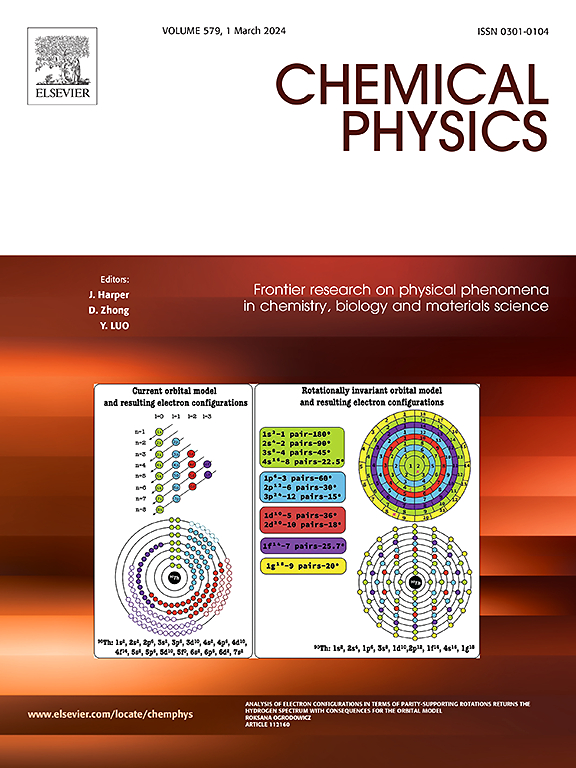Decomposition mechanism of isoprenoid p-cymene during supercritical water gasification by ReaxFF simulation
IF 2.4
3区 化学
Q4 CHEMISTRY, PHYSICAL
引用次数: 0
Abstract
Isoprenoid p-cymene exhibits severe coking tendency during pyrolysis, restricting its conversion efficiency when served as biofuels. However, this is expected to be mitigated through supercritical water gasification (SCWG), a clean and sustainable conversion technology. In this study, ReaxFF simulations are employed to investigate the SCWG process of p-cymene at 2800 K. Due to the participation of H2O, H-abstractions occur more frequently in the initial decomposition. Subsequent reactions of H2O with generated C10H19, C9H17, and C7H13 radicals, thereby effectively inhibit coke formation by decomposing those existing coking precursors and preventing their further chain-transfer reactions. Meanwhile, Species-dependent analysis on generation channels of CO and H2 suggest that reactions involving H2O also actively promote the conversion of less reactive C in the aromatic structure. This computational study could deepen the understanding of decomposition of aromatic isoprenoids during pyrolysis and SCWG process and offers potential solutions for enhancing the conversion efficiency of isoprenoid biofuels.

ReaxFF模拟超临界水气化过程中类异戊二烯对伞花烃的分解机理
类异戊二烯对伞花烃在热解过程中表现出严重的焦化倾向,限制了其作为生物燃料的转化效率。然而,这有望通过超临界水气化(SCWG)来缓解,这是一种清洁和可持续的转化技术。在本研究中,采用ReaxFF模拟研究了2800 K下对伞花烃的SCWG过程。由于H2O的参与,h -抽象在初始分解中出现的频率更高。H2O与后续反应生成C10H19、C9H17和C7H13自由基,通过分解现有的焦化前体,阻止其进一步的链转移反应,从而有效抑制焦炭的形成。同时,对CO和H2生成通道的物种依赖分析表明,H2O参与的反应也积极促进了芳香结构中活性较低的C的转化。该计算研究可以加深对芳香族类异戊二烯在热解和SCWG过程中分解的认识,并为提高类异戊二烯生物燃料的转化效率提供潜在的解决方案。
本文章由计算机程序翻译,如有差异,请以英文原文为准。
求助全文
约1分钟内获得全文
求助全文
来源期刊

Chemical Physics
化学-物理:原子、分子和化学物理
CiteScore
4.60
自引率
4.30%
发文量
278
审稿时长
39 days
期刊介绍:
Chemical Physics publishes experimental and theoretical papers on all aspects of chemical physics. In this journal, experiments are related to theory, and in turn theoretical papers are related to present or future experiments. Subjects covered include: spectroscopy and molecular structure, interacting systems, relaxation phenomena, biological systems, materials, fundamental problems in molecular reactivity, molecular quantum theory and statistical mechanics. Computational chemistry studies of routine character are not appropriate for this journal.
 求助内容:
求助内容: 应助结果提醒方式:
应助结果提醒方式:


